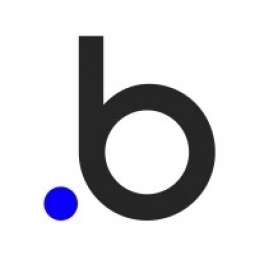技术
- 平台即服务 (PaaS) - 应用开发平台
- 可穿戴设备 - 智能服饰
适用行业
- 服装
- 水泥
用例
- 楼宇自动化与控制
- 运动预测
关于客户
Rags 专为有兴趣发现独特服装品牌并与他人互动的时尚爱好者而设计。该平台对于寻求曝光度以及与潜在客户建立联系的方式的服装品牌也有好处。用户可以探索各种品牌、在其页面上发表评论并关注其他用户。他们还可以创建个人资料来跟踪他们喜欢和寻找的品牌。该平台用户友好,不需要任何编码技能即可导航。它是一个社区驱动的平台,用户为新品牌的发现和推广做出贡献。
挑战
Rags 是一个时尚发现平台,由 Josh Cornelius 和 Stephanie Savoie 创立,旨在让用户发现独特的服装品牌并与他人互动。挑战在于无需编码即可创建功能齐全的数字产品。创始人希望构建一款应用程序,允许用户探索各种服装品牌、与其他用户互动并了解最新趋势。他们还希望为品牌提供一个获得曝光并与潜在客户建立联系的平台。然而,创始人缺乏构建如此复杂平台所需的编码技能。
解决方案
创始人选择了 Bubble(一个无代码平台)来构建他们的应用程序。 Bubble 强大的点击式 Web 编辑器和云托管平台使他们能够构建完全可定制的 Web 应用程序,而无需任何编码。该应用程序包含服装品牌集合、“顶级品牌猎人”列表以及一个探索页面,用户可以在其中按风格、地点、可持续/道德实践、制造地点和其他属性进行搜索。用户可以点击某个品牌来查看更多信息、其网站和 Instagram 的链接、他们在所属类别中的排名,并评论有关该品牌的问题或想法。用户还可以创建个人资料来查看他们关注、搜索的所有品牌以及他们添加的评论。他们可以关注其他用户以了解他们的最新活动。
运营影响
数量效益

Case Study missing?
Start adding your own!
Register with your work email and create a new case study profile for your business.
相关案例.

Case Study
Fire Alarm System and Remote Monitoring Sytem
Fire alarm systems are essential in providing an early warning in the event of fire. They help to save lives and protect property whilst also fulfilling the needs of insurance companies and government departments.Fire alarm systems typically consist of several inter-linked components, such as smoke detectors, heat detector, carbon monoxide, manual call points, sounders, alarm and buzzer. The fire alarm system should give immediate information in order to prevent the fire spread and protect live and property.To get maximum protection a shoe manufacturer in Indonesia opted for a new fire alarm system to monitor 13 production sites spread over 160 hectars. Although the company had an existing fire alarm system, it could not be monitored remotely.It was essential that the new system would be able to be monitored from a central control room. It needed to be able to connect to the existing smoke detector and manual call point. Information should be easily collected and passed on to the Supervisory Control and Data Acquisition (SCADA) system. Furthermore, the system should have several features such as alarm management, auto reporting, being connected to many client computers without additional cost, and run 24/7 without fails. The company also needed a system which could be implemented without changing the architecture of the existing fire alarm system.

Case Study
IoT Applications and Upgrades in Textile Plant
At any given time, the textile company’s manufacturing facility has up to 2,000 textile carts in use. These carts are pushed from room to room, carrying materials or semi-finished products. Previously, a paper with a hand-written description was attached to each cart. This traditional method of processing made product tracking extremely difficult. Additionally, making sure that every cart of materials or semi-finished products went to its correct processing work station was also a problem. Therefore, the company desired an intelligent solution for tracking assets at their factories. They also wanted a solution that would help them collect process data so they could improve their manufacturing efficiency.

Case Study
System 800xA at Indian Cement Plants
Chettinad Cement recognized that further efficiencies could be achieved in its cement manufacturing process. It looked to investing in comprehensive operational and control technologies to manage and derive productivity and energy efficiency gains from the assets on Line 2, their second plant in India.

Case Study
Retailer Uses RFID Scanner to Improve Efficiency
Patrizia Pepe wished to improve the logistics of their warehouse: accepting incoming goods from their production sites, movement of items throughout
the warehouse, and packaging of goods for distribution to the retail locations. They initially tried to use barcodes for this function. Because barcodes must be individually scanned within a line-of-sight, the acceptance of goods coming into the warehouse was too time consuming. Working with the University of Florence, Patrizia Pepe instituted a five-month pilot project beginning in August of 2009 to test the validity of an RFID solution. The pilot involved tagging of about 60,000 items for the second seasonal collection, and convinced the company to move forward with tagging all items.

Case Study
Monitoring and Controlling Automatic Mixing and Dispensing Machines
As technology advances, textile manufacturing has been transformed from a labor-intensive to a partially or fully automated industry. Automation is significant in all segments of textile production - from spinning to printing, and textile machinery manufacturers are constantly searching for new technologies and automation processes will increase the productivity of their machines. The color paste mixing and dispensing machine is an essential part of the printing and dyeing process. With the advantage of automatically computerized controls and database management, the system can significantly improve its dispensing precision, working efficiency and production quality as well as reducing material consumption.




